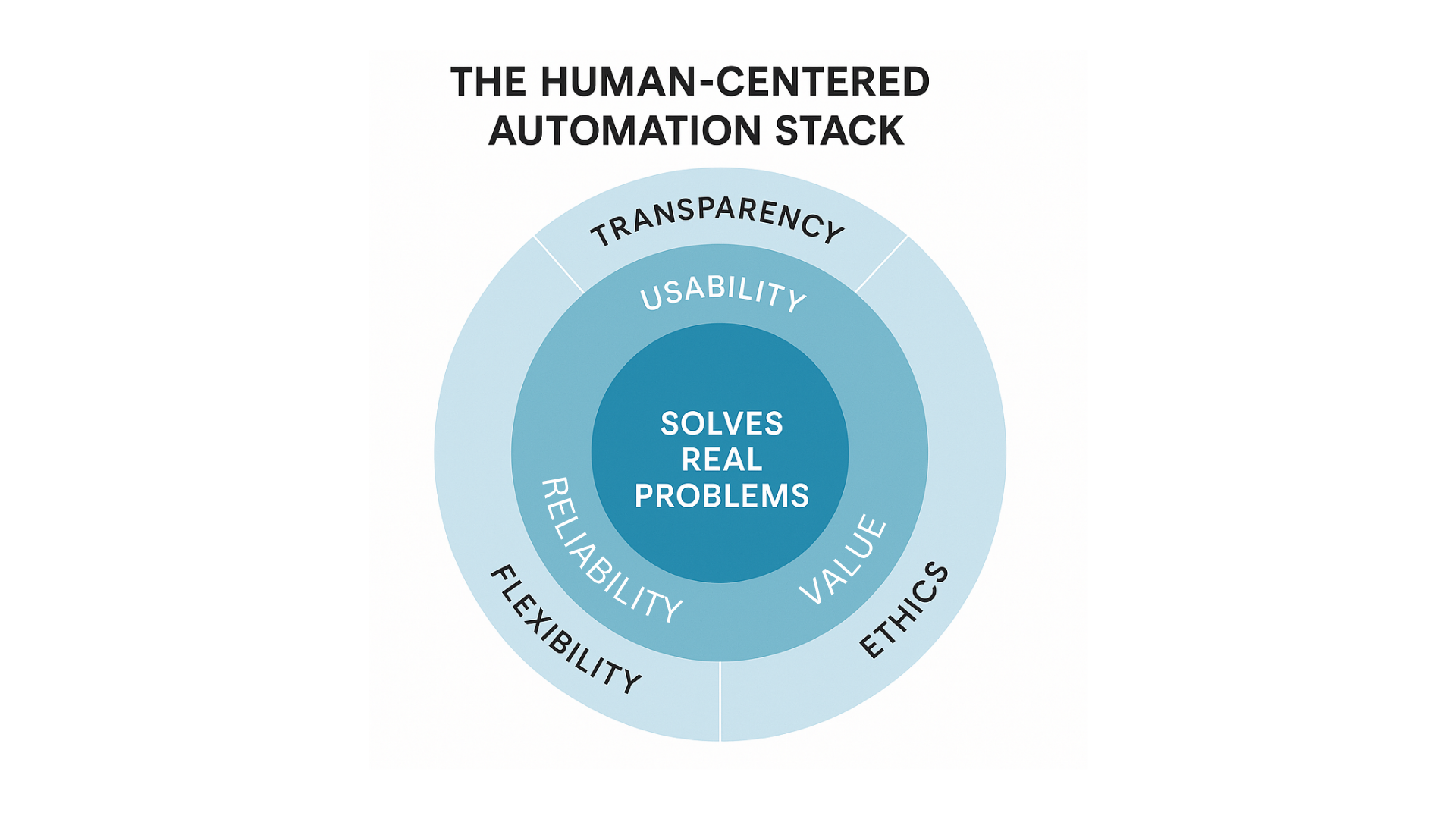3.1 Zapier - The Popular Productivity Bridge
What It Is:
Zapier is one of the most widely adoptedno-code automation platforms, founded in 2011 and trusted by over 2.2million users worldwide [1]. It allows users to connect more than 6,000web apps from Google Sheets to Slack, Salesforce to Trello—by creating“Zaps” (automated workflows made of triggers and actions). Its drag-and-dropeditor enables non-technical users to create powerful automations withoutwriting a single line of code.
Zapier became popular not because it’s themost advanced but because it was the first to make automation trulyaccessible to solo workers, marketers, small teams, and startups.
Who It’s For:
- Solopeneurs & small teams
- Marketing professionals
- Operations managers
- Anyone needing quick automation across multiple SaaS tools
- Teams with limited developer resources
Zapier is ideal for people who want resultsfast and don’t want to touch APIs or backend logic.
What It Excels At:
- Speed to value: Most zaps can be created and developed in under 10 minutes
- Ease of use: Templates andwiyardrs help youautomateworkflows in a few clicks
- Vast app coverage: It's 6.000+ app integrations cover almost ervery major SaaS tool
- Reliable uptime: Zapier consistently performs well across use cases and user volumes
- Multi-step automation: With conditional logic (Paths) and filters, it can handle moderately compex workflows
- Interface simplicity: Intuitive UI makes it apporoachable for anyone even non-technical users
What to Watch Out For:
- Limited felxibility at technical level: You can't modify code or run complex logic without a workaround (e.g. webhooks, build-in code steps)
- Pricing: As workflow grow in volume or compexity, Zapier can become expensive,. The free tier is limited to single-step zaps and fewer tasks
- Black-box feel: While usable,Zapier lacks transparency in error handling or debugging for more advanced flows
- Not self-hostable: Non-premises or open-source version -everytthing runs through Zapier's cloud
Example Use Cases:
- Auto-posting Instragram uploads to Twitter and Facebook
- Sending Slack alerts when a new lead fills out a Google Form
- Adding webinar setups from Eventbrite directly into a CRM
- Syncing Airablerecords to Mailchimp subscriber lists
- Auto-generating invoices from new Stripe payments
Integration & Scalability Potential:
Zapier integrates with tools used in marketing,content ops, HR, sales, and finance. It can handle high-scale operationsfor SMEs, but large enterprises might outgrow its customization limits or needmore granular control over workflows, user roles, or compliance.
For example, a startup marketing team coulduse Zapier to connect Notion, Slack, Google Sheets, and HubSpot,streamlining lead tracking without developer support.
Summary
Zapier is best when:
- You need quick results with minimal setup
- You work across multiple web apps
- Your flows are not highly complex
- You value time savings over customization depth
3.2 Make (formerly Integromat) - TheVisual Automation Powerhouse
What It Is:
Make is a low-code visual automationplatform designed for users who need greater flexibility and controlover their workflows. Acquired by Celonis in 2020, Make is a favorite amongdevelopers, product teams, and power users due to its flowchart-style editorand modular logic capabilities. Unlike Zapier, Make allows for intricatebranching, data manipulation, looping, and custom API calls all inside auser-friendly interface.
Make’s strength lies in how visuallytransparent and technically granular each step is. Users can seedata as it flows through the system and transform it on the fly using built-infunctions, filters, and scripting.
Who It’s For:
- Technical marketers & operations teams
- Product managers & automation engeneers
- Developers looking for a GUI-based workflow builder
- Teams with mid-to-high-complexity use cases
- Organizations needing data-rich, muti-step automations
Make is ideal when Zapier starts to feeltoo restrictive or opaque.
What It Excels At:
- Visual clarity: its modular convas gives full visibility into complex workflows
- Advanced logic: Built-in support for iterators, routers, delays, error handlers, and conditional logic
- Native API suppot: Connect to any REST API whithout writing external code
- Data transformation: Powerful tools to reformat, split, aggregate, or map date inline
- Detailed debugging: Watch real-time data passing through each module
- Cost-effictiveness: Often more affordable than Zapier for high-volume use
What to Watch Out For:
- Steeper learning curve: Not beginner-friendly; can overwhelm non-technical users
- Limited templates and wizards: User must understand logic and structure upfront
- Interface complexity: The visual UI is powerful but dense.- especially for newcomers
- Occasional instability: Some modules can break silently if upstream data formats shift
Example Use Cases:
- Build a dynamic newsletter system that pulls blog updates from WordPress and formats them into MailchimpPar
- se webhook playloads and route them differently depending on conditions (e.g., sales region or product type)
- Loop through new Airtable records to create matching Google Calendar events
- Handle real-time error logging from a Stripe billing flow into Google Sheets + Slack
Integration & Scalability Potential:
Make has fewer direct app integrations thanZapier (around 1,500+), but makes up for it with API extensibilityand powerful tools like HTTP modules, JSON parsing, and externaldata mapping. That makes it ideal for companies who want to scale andsystematize their automation without custom engineering work.
It’s especially effective when used as acentral backbone that ties together multiple data systems in product,marketing, and CRM workflows.
Summary
Make is best when:
- You need more logic than Zapier allows
- You want to visualize the entrie flow with granular control
- You're comfortable working with APIs and data structures
- You want more automation power without full coding
3.3 Notion - The Thinking Workspace WithAutomation DNA
What It Is:
Notion is more than a note-taking app—it’sa modular productivity operating system used by individuals, startups,and enterprises to centralize documentation, project management, contentcreation, and increasingly, automation. While it’s not an automationtool in the traditional sense like Zapier or Make, Notion has evolved into a foundationalworkspace that can trigger and receive automation across tools.
With the launch of its official API in2021 and deep integrations with platforms like Zapier, Make, and n8n,Notion has positioned itself as a dynamic data hub—a place wherestructured information (databases, calendars, content pipelines) meets humanthinking.
Who It’s For:
- Creators, written, and marketers managing content pipelines
- Founders & Team leads centralizing knowledge and project planning
- Startups building a single source ofthrough for operations
- Developers or product teams documenting software, roadmaps, and workflows
- Anyone looking for a customizable, visual workspace that adapts to their way of thinking
What It Excels At:
- Unified workspace: combines docs, databases, Kaban, calendars, and wikis in on place
- Automation-ready: Offers built-in integrations, API endpoints, and webhook triggers
- Flexible data modeling: Use databases like mini-CRMs or editorial calendars
- Collaboration & visibility: Real-time collaboration, access control, and incline discussions
- Plug-and-play with tools like Zapier, Make, and n8n to turn content actions into automation triggers (e. g. , "if new idea added to backlog -> create Jira task")
What to Watch Out For:
- Automation is external: Notion doesn't natively support automation logic -> external tools are needed
- API limitations: Some advanced use cases (e. g. deeply nested content blocks or versioning) aren't yet supported
- Performance on large workspaces: As databases grow, load times can increase
- No native scripting: You can't define logic within Notion itself -> reliant onexternal flowlogic (like Make or Zapier)
Example Use Cases:
- Automatically create a new Notion task when a Typeform us submitted
- Use Notion as a content CMS andauto-publish blog post via Wordable
- Trigger Slack notifications when status changes in a project database
- Build a CRM inNotion and automate status updates through Zapier
- Log AI content brieds (e. g. from ChatGPT) into Notion via API
Integration & Scalability Potential:
With its API and growing plugin ecosystem,Notion can serve as a central command layer for work. It’s especiallypowerful when integrated via:
- Zapier (for quick automation triggers)
- Make (for more detailed workflows)
- n8n (for open-source andon-premise workflows)
- Wordable (for exporting structured content direct to CMS platforms)
As your data in Notion becomes richer, itsutility as an automation control center grows. It's not theautomation engine itself, but the brain that feeds and receives it.
Summary
Notion is best when:
- You want to organize content, ideas, and operations visually
- You're building repeatable workflows around content or documentation
- You want a workspace that plugs into your automation ecosystem
- You need an adaptable system without coding, but plan to extend it with external tools
3.4 n8n - The Open-Source AutomationFramework
What It Is:
n8n (short for “Node-RED 8 Nodes”)is a powerful open-source, self-hostable automation platform designedfor technical users and teams who need full control over their workflows, data,and infrastructure. Unlike proprietary platforms like Zapier or Make, n8n givesyou access to raw code, logic, and deployment, enabling deepcustomization and secure on-premise hosting.
With over 400 native integrations,plus full API and custom node support, n8n is ideal for engineering-led teamsthat want to build tailored automations without vendor lock-in. Itsvisual editor lets users chain tasks, build logic, transform data, andorchestrate complex backend processes.
Who It’s For:
- Deveelopers & DevOps engeneers
- Technical product managers
- Privacy-focussed organization needing on-premise automation
- Startups and enterprises seeking custom logic with cost control
- Teams that already maintain server infrastructure andprefer open systems
What It Excels At:
- Open-source flexibility: Run it on your own serverorDocker container with full data ownership
- Custom nodesupport: Write JavaSkript directly into workflows or build custom app integrations
- Granular logic: Includes looping, conditional branches, error handling, webhook listeners, and multi-output nodes
- Security-first: Ideal for business that handle sensitive data and can't rely on cloud-only solutions
- Strong developer community: Active GitHub project,plug-in ecosystem, and integrations with Git workflows
What to Watch Out For:
- Requires technical setup: Installation, maintenance, and scaling require DevOps knowledge
- Not designed for beginners: While it has a visual UI, the logic assumes technical understanding
- Initial UX less polished than mainstream tools like Zapier or Make
- Documentation still maturing: Some edge cases or integrations may need community support
Example Use Cases:
- trigger webhooks from a contact form, process lead data, and sync to multiple CRMs
- Clean and enrich marketing data in real time using multiple third-party APIs
- Orchestrate machine learning workflows or cron-based data pipelinesHandlepr
- ivate financial or health data on-premise, with full control over logging and access
- Build a secure backend workflow that integrates GitHub,S3, and PostgreSQL
Integration & Scalability Potential:
n8n can connect to anything that offers anAPI or webhook—and if it doesn’t exist, you can write it. Its serverless orcontainer-based deployment means you control your cost and scale. Combinedwith tools like Notion, Zapier, or Airtable, n8n often acts as the “automationbackend” for complex internal workflows.
It’s especially powerful when paired withdata lakes, internal APIs, or CI/CD pipelines.
Summary
n8n is best when:
- You need total control over logic, datta, and hosting
- You want open-source, secure automation at scale
- Your team has technical resources to maintain infrastructure
- You're building advanced workflows beyond what no-code tools offer
3.5 Wordable - Instant ContentPublishing from Docs to CMS
What It Is:
Wordable is a specialized automationtool designed to solve a very specific (and common) content operations painpoint: getting content from Google Docs into a CMS like WordPress—cleanly,quickly, and without manual formatting headaches. Unlike general-purposeautomation platforms, Wordable focuses on automating the publishing pipelinefor marketers, SEO professionals, editors, and content teams.
What used to take 30–90 minutes per blogpost—copying, pasting, fixing formatting, compressing images, adjustinglinks—can now be done in under 60 seconds with one click. Wordablehandles formatting, HTML conversion, metadata, image compression, and directpublishing or draft creation.
Who It’s For:
- Content marketers and SEO teams
- Editors and blog managers
- Freelancers and agencies publishing for multiple clients
- Startups scaling upcontent production
- Non-technical users who rely on Google Docs + WordPress / HubSpot / Medium
What It Excels At:
- Seamless publishing: Upload Google Docs directly to CMS without reformatting
- Preserves styles: Converts Google Docs headings, images, links, and HTML tags clean
- Bulk exports: Publish multiple articles in one batch
- Optimized for SEO: Handles image compression, alt text, and metadata automatically
- Integrations with WordPress, Medium, HubSpot, and Webflow
- Time saving: Reduces publishing time by up to 90%, especially at scale [1]
What to Watch Out For:
- Nieche use cases: It's not a general automation tool only useful for content publishing
- Google Docs dependency: Works only with Docs; no Miscrosoft Word or Notion support (yet)
- CMS integration limited: Doesn't cover every CMS platform; geared toward WordPress and few others
- Paid-only: No freetier for casual users; monthly subscription required for use
Example Use Cases:
- Auto-punlish weekly blog posts from your content calendar in Google Docs to WordPress
- Let freelance writers deliver SEO-formatted content in Docs that is 1-click ready for publishing
- Export interview notes or whitepapers from Docs directly to a HubSpot knowledge base
- Enable agencies to maintain multiple client blogs with centralized editorial workflows
Wordable is a perfect specialist toolthat plugs into larger workflows involving Notion, Zapier, Make, and Airtable.For example:
- Use Notion as your editorial calendar
- Send approved ideas to Google Docs
- Use Wordable to push the final version directly to WordPress
- Track performance in a central analytics dashboard (via Make or n8n)
It doesn’t replace general automation tools,but it removes one of the most painful bottlenecks in content workflows.
Summary
Wordable is best when:
- You manage content pipelines in Google Docs
- You publish regulary to WordPress, HubSpot, or Webflow
- You need to speed up formatting, compression, and publishing without touching code
- You want to free up ypur team from repetitive CMS work






